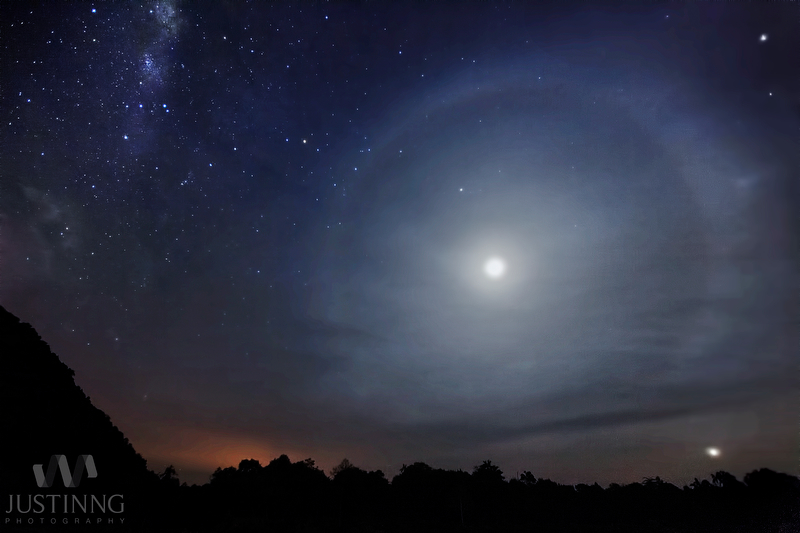Re: Submissions: 2013 September
Posted: Tue Sep 03, 2013 9:17 pm
Copyright: Vinodiran Arumugam
Caption: This was a photo taken on a night of poor observing conditions on Mauna Kea a couple of weeks ago (21/8). The moon was high in the sky and full - or perhaps a day off a full moon - brightly illuminating the Mauna Kea landscape. You can see, from left to right, the Canada-France-Hawaii, Gemini, UH 2.2m, UKIRT and UH 0.9m telescopes. Celestially, you can see the Pleiades, the constellations of Taurus and Orion and the Orion nebula. The bright object seen next to the CFHT is the planet Mars. This all makes for what looks like a nice clear night and a lot can be seen even on a moonlit night.
I believe this might be an interesting APOD because of the response received when this picture was shown to people. The reason I refer to this as a night with poor observing conditions is that I was observing at the James Clerk Maxwell Telescope, a sub-millimetre telescope, and the weather conditions were deemed too bad to make observations for the program I was there to observe due to high percipitable water vapour content of the sky. This presents a rather interesting illustration for the difference in observing at different wavelengths i.e. what looks nice and clear in the optical is actually poor observing conditions at sub-millimetre wavelengths. People initially don't understand why I say I had bad weather until I explain this to them.
Link: http://www.flickr.com/photos/58618409@N05/9570874732/
Caption: This was a photo taken on a night of poor observing conditions on Mauna Kea a couple of weeks ago (21/8). The moon was high in the sky and full - or perhaps a day off a full moon - brightly illuminating the Mauna Kea landscape. You can see, from left to right, the Canada-France-Hawaii, Gemini, UH 2.2m, UKIRT and UH 0.9m telescopes. Celestially, you can see the Pleiades, the constellations of Taurus and Orion and the Orion nebula. The bright object seen next to the CFHT is the planet Mars. This all makes for what looks like a nice clear night and a lot can be seen even on a moonlit night.
I believe this might be an interesting APOD because of the response received when this picture was shown to people. The reason I refer to this as a night with poor observing conditions is that I was observing at the James Clerk Maxwell Telescope, a sub-millimetre telescope, and the weather conditions were deemed too bad to make observations for the program I was there to observe due to high percipitable water vapour content of the sky. This presents a rather interesting illustration for the difference in observing at different wavelengths i.e. what looks nice and clear in the optical is actually poor observing conditions at sub-millimetre wavelengths. People initially don't understand why I say I had bad weather until I explain this to them.
Link: http://www.flickr.com/photos/58618409@N05/9570874732/











